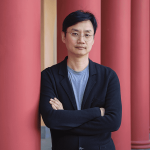 Born in Hong Kong and raised in the UK, Roger has worked as an architect for a number of practices in both markets on large-scale master planning, commercial and mixed-use developments. With extensive experience leading complex restoration projects in the UK, China and Hong Kong, Roger has put his knowledge, experience and interest in the regeneration of historical buildings, including Peter Jones, Kings Cross Station and the Royal Military Academy in London. Roger is currently the Chief Executive of the Haw Par Music Foundation Limited, working on the revitalisation of the Haw Par Mansion in Tai Hang, Hong Kong, into a music academy.
Born in Hong Kong and raised in the UK, Roger has worked as an architect for a number of practices in both markets on large-scale master planning, commercial and mixed-use developments. With extensive experience leading complex restoration projects in the UK, China and Hong Kong, Roger has put his knowledge, experience and interest in the regeneration of historical buildings, including Peter Jones, Kings Cross Station and the Royal Military Academy in London. Roger is currently the Chief Executive of the Haw Par Music Foundation Limited, working on the revitalisation of the Haw Par Mansion in Tai Hang, Hong Kong, into a music academy.
You have extensive experience in the regeneration of historical buildings, what originally ignite your passion in heritage conservation?
I haven’t been to this position by chance. I have never been trained as a conservation architect or in this field. But the story started when I was very young and studied in a historic city Bath in the UK where there were all of the amazing Georgian and Victorian buildings. To some extent, it was also a negative experience so far as there is very little creativity for the contemporary buildings as everything has to be preserved and has to be in the pretty same manner as it was before. Everyone loves Bath and it is a tourist attraction. Everything is mock Georgian, even though it is built in a contemporary manner it has to be Georgian. But as a student, we were all looking for creating something contemporary and modern.
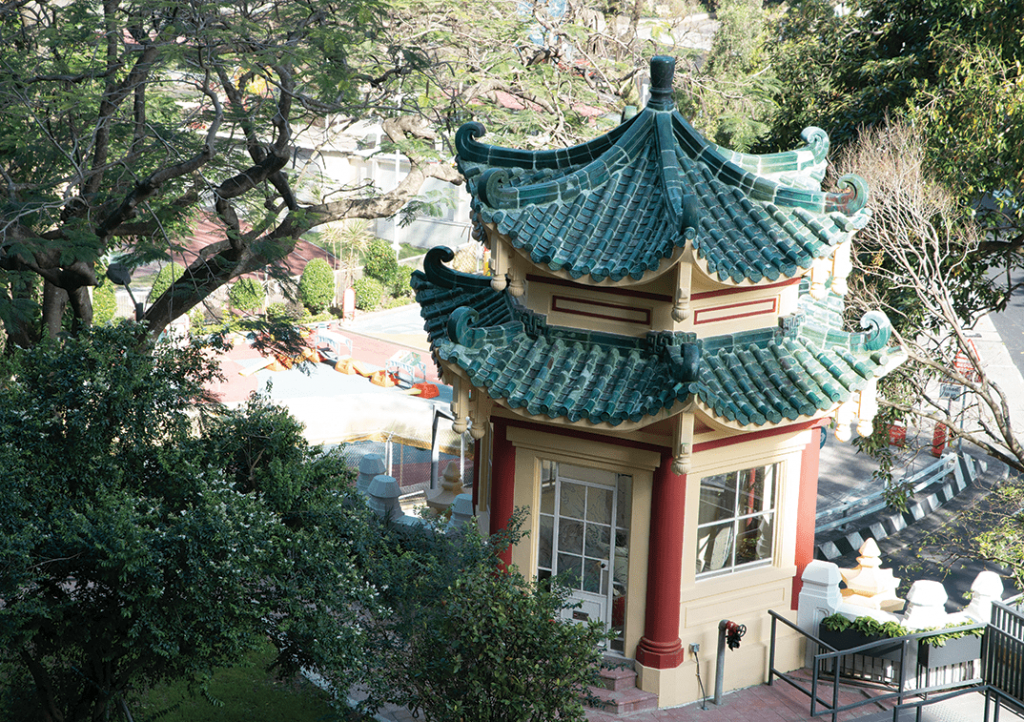
Garden Corner Tower
It got me thinking that conservation isn’t necessarily about keeping old building. I think there must be a way to cope with new things in a historic city. So it was sort of my formative years for some of the ideas I have now. At that time I was strongly against prestige and conservation for the sake of it. After graduation, I had worked in London for almost 20 years. London is a city with great history and British people are especially good at keeping old things and heritage. Even when we were doing new buildings, it would probably be in the conservation area or next to the historic building which made you consider all of those things. So it was an organic and specific training to think in a certain way about history, heritage and context.
I think context is an important thing for me because everything has its own context such as historic thing or social. I recalled in London the first thing we did in a new building project, we would look at the history of the place to see if it would reform the next generation of building and put the building in the place and in context. For me, it is probably more important than any resurrection, prestige or merit of the past. I was really lucky to have the opportunity to work in a number of heritages abroad when I was in London. I understand that conservation is the respect of the culture as different places have different demand, historic background and circumstance which we need to adapt to the local condition and the local context. So again, the word context gives something back because you can’t work on the heritage conservation from the UK to other places and then expect the same return as the context are different. So when I came back to Hong Kong 8 year ago, I was lucky to be involved in very large scale conservation project which I have also gained a lot of experiences.
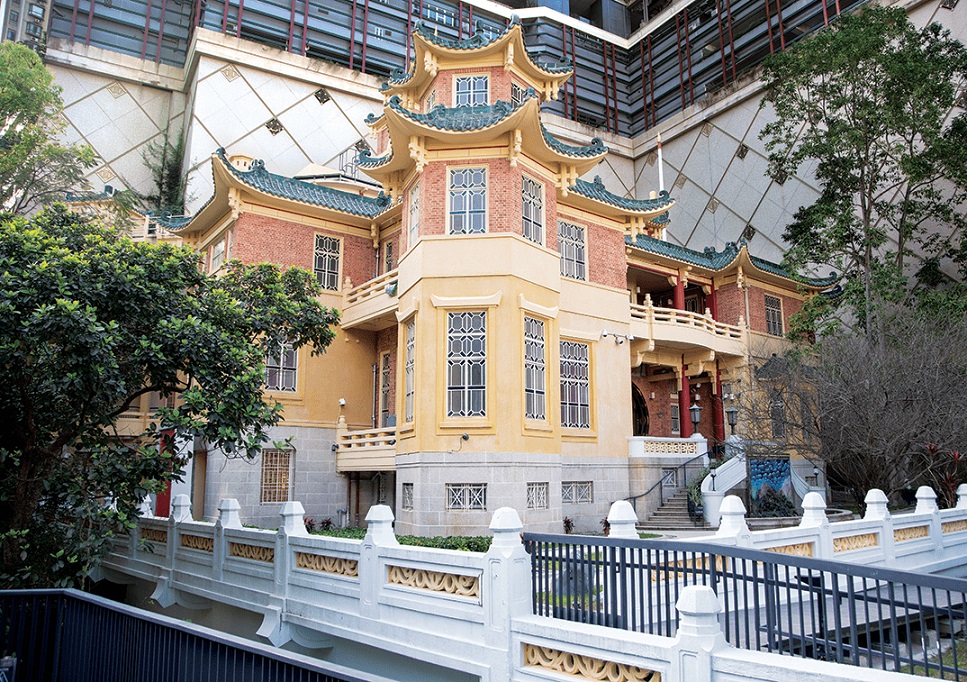
You have been the advocate for the idea that “conversion is about the management of change”, can you further explain the idea? How will it change the heritage conservation in Hong Kong?
If you ask me to use one word to describe Hong Kong, it would be “change”. In the last fifty or even centenary, Hong Kong has been changing almost every decade. It is kind of change of its place in the region and the world over the year. The cityscape has also changed a lot. If you look at the photos of habour front over the years, it dramatically changed. So it is important to think about how to manage the change. When we talk about resurrection, we are just doing nothing but returning it to its former glory. And then there is conservation which is a bit more than that, you need to conserve it probably with a use and to continue its life in certain way. When it comes to revitalisation, we need to give the building a new use and a new life. Given the fact that change defines Hong Kong so much, its context is the way and approach to look at anything we have left to revitalise and make good use of it. If you consider the social or financial context in that blend value, then revitalisation is not as advisable as other places. There is a reason why an old building is no longer in use. How can it be used in the future? What are the values of that building to be conserved? In the past year, the discussion has been stuck in collective memory without really thinking about what we keep this for. If we go along with this, a lot of buildings will only be kept as museum which I think is not a good thing. As a city, we need to look at a broader picture and not just about its value. Conservation is a relatively new concept in Hong Kong and doesn’t have a systematic rule or guideline from how to value a building or how you decide to keep it or not. Not keeping the building is not the end of the world but the more important thing is how to continue its legacy. Just like my experience in UK, even though the old buildings are long gone, we still did the entire historic map to see how it had been evolving over the years.
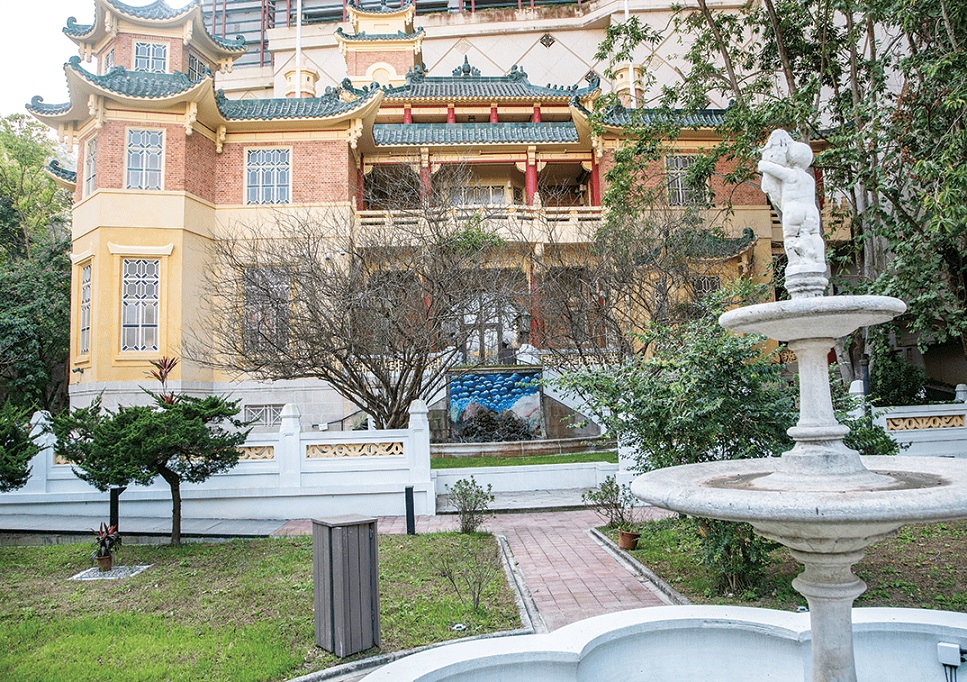
Garden elevation of the Main Mansion
You have involved in the preservation of numerous iconic buildings in Hong Kong and the United Kingdom, which one do you regard as your proudest project? What set it apart from other projects?
As a designer you always want your last project to be your best project. You take what you’ve learnt and put it into good use so theoretically your latest project should be better than the previous one. For the revitalisation of The Haw Par Mansion, I think it is a great project. First of all, my role as the representative from the client side is different from what I’ve done before. I can see more than the design perspective. I have to look at the design, time, cost and programming to balance both the design and client’s consideration. Undoubtedly they are all professionals in design. For me, the balancing process is a great experience. From my designer background, I can understand why the designer has been pushing their ideas. But I have to think beyond the design and to strike a balance with my consideration such as budget and time or so on. It is a very interesting experience and I am really happy with the outcome. We have avoided a lot of unnecessary confrontation as we understand each other. The communication is great and the process has been very smooth. Secondly, as a designer, when you come to the building, you might look at the space, the details, take some photos and hoping to win some awards. But for me, the proudest moment is when I hear music in this place as I look from the user perspective. I think what we’ve done is beyond fit for purpose and better than we could imagine.
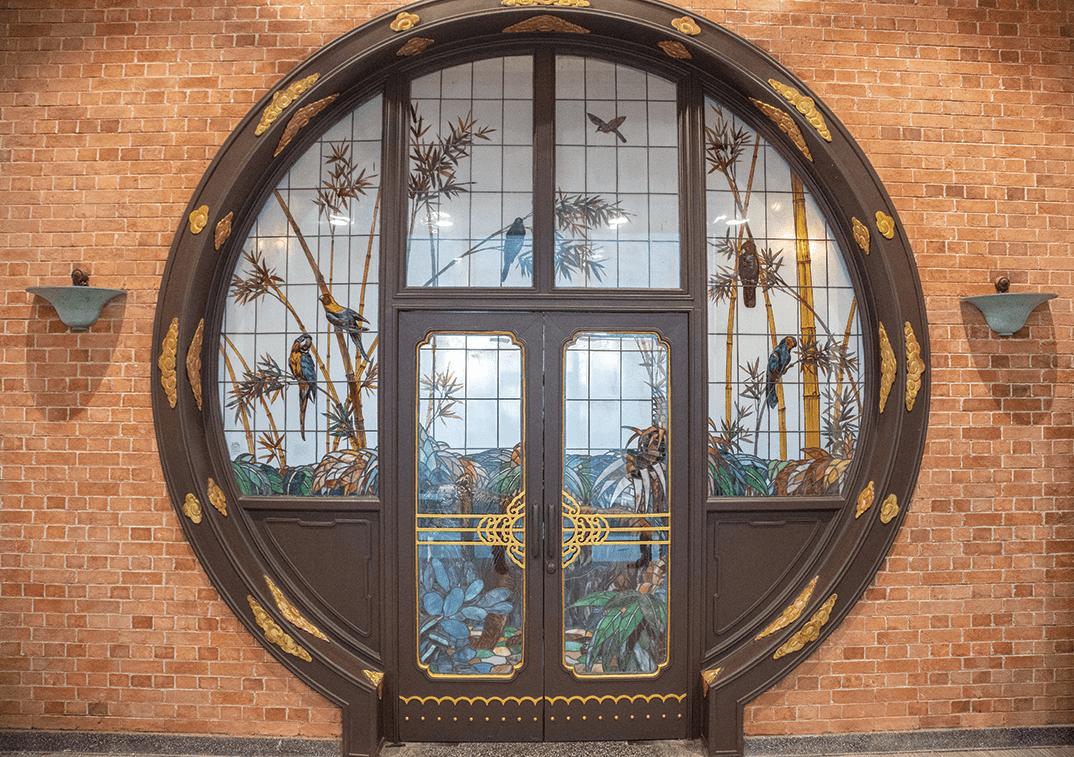
Moon gate with restored stained glass panels
You are now working on the revitalisation of the Haw Par Mansion into a music academy, where does the idea come from?
The idea is fixed by the time I got involved in the project so it wasn’t me who make the decision. I remember when I heard about this project, even before I knew the reason behind, it just sounds right. Both the revitalisation of hardware and the proposed software just matched very well. When you come to here, you can feel the culture, characteristics of the place and the atmosphere is really great. Hong Kong has always been regarded as a clash of different culture, ranging from East, West, and South East Asia or so on, which is very unique and hard to find in elsewhere. It is not really about whether you like it or not. The fact is you are like in an oasis in the jungle when you come to this building. This is the ideal location for music, drama or choreography.
Haw Par Mansion is one of the most iconic heritages in Hong Kong, can you share the challenges that you encounter during the conversion process and how did your team overcome it?
I think it is about communication. First of all, it is about doing the best but planning for the worst. We knew from the beginning that there would be many challenges as we are probably to do something that nobody has done before. We will try some new things here therefore these concepts may not be able to be delivered. We need to accept that and still planning for the best but also planning for plan B. It may not as brilliant as plan A but it is at least more than acceptable to us. We also set ourselves a target drop off day to fall back to plan B when the initial plan doesn’t work. From the client perspective, the difficulty is to push the bottom and to decide when is the time to use the alternative plan due to the cost consideration. I can point to you that there are a lot of things which we could do much better if we have more time and budget. But life doesn’t like that.
To read the whole issue of Construction+, please download the Construction Plus App on the App Store or Google Play.








